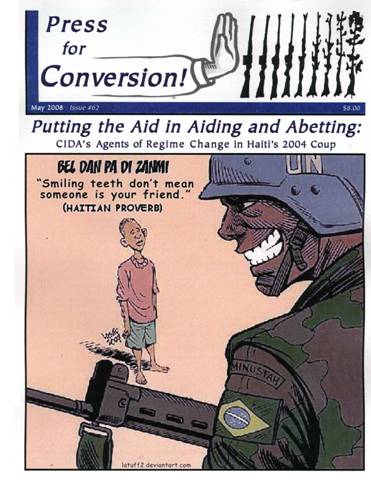NGOs Spend More Than 80 Percent of Donations to Haiti
Port-au-Prince, Jun 18 (Prensa Latina)
More than 80 percents of the reconstruction donations sent to overcome the aftermath of the January 2010 massive earthquake in Haiti are drained to meet the needs of NGOs from the USA, Canada and Europe, denounces the Conference “Post-Quake Work of NGOs in Haiti”, held in Canada.Haitian Nancy Roc refuted allegations that Haiti squanders the international relief and wondered why none such officials were invited to the event while Prof. Stephane Pallag,of Canada, urged to reformulate the aid to Haiti for it remains ineffective near three years later.
In message to the colloquy, Prime Minister Laurent Lamothe warned their presence can now be called damaging since their operations never fund state projects, hence his call to the world to review their destination.
He also warned that his government plans to urge for more transparency from the NGOs -today some 595 but the exact numbers remain shady- and to channel every relief efforts and aid reaching Haiti to state-run institutions for it is the foreign companies who are managing the donations if they ever reach Haiti.
“The government is the best suited to channel this aid as long as it meets the rigour and act as transparent as the donors demand.”
President Michel Martelly denounced last January that his government has not seen one single cent from the international reconstruction donations and just one percent the four billion USD sent for the purpose were invested in social programs, obviously frustrating reconstruction.
The independent magazine Dissident Voices also blames NGOs, private contractors and some governments for the contradictory management mechanism and corruption that turned the US Administration into the largest recipient of the relief funds for Haiti.
Just after the quake, they assigned $379 million as preliminary relief budget but sent in troops, so 33 cents in every dollar returned to the mainland to refund their salaries or pay checks.
The magazine also quotes a report from the US Congress Investigations Office on more funds sent later ($655 million) which returned to the Deparment of Defense and $220 million refund to the Health and Human Services Deparment and the United Nations confirmed that Haiti just got half the aid request in 2011 and this year just 8.5 percent of the promised aid.



 Elianette Derilus tucks her prematurely born new baby daughter in the top of her dress in the maternity wing on January 04, 2012 in Port-Au-Prince, Haiti
Elianette Derilus tucks her prematurely born new baby daughter in the top of her dress in the maternity wing on January 04, 2012 in Port-Au-Prince, Haiti


